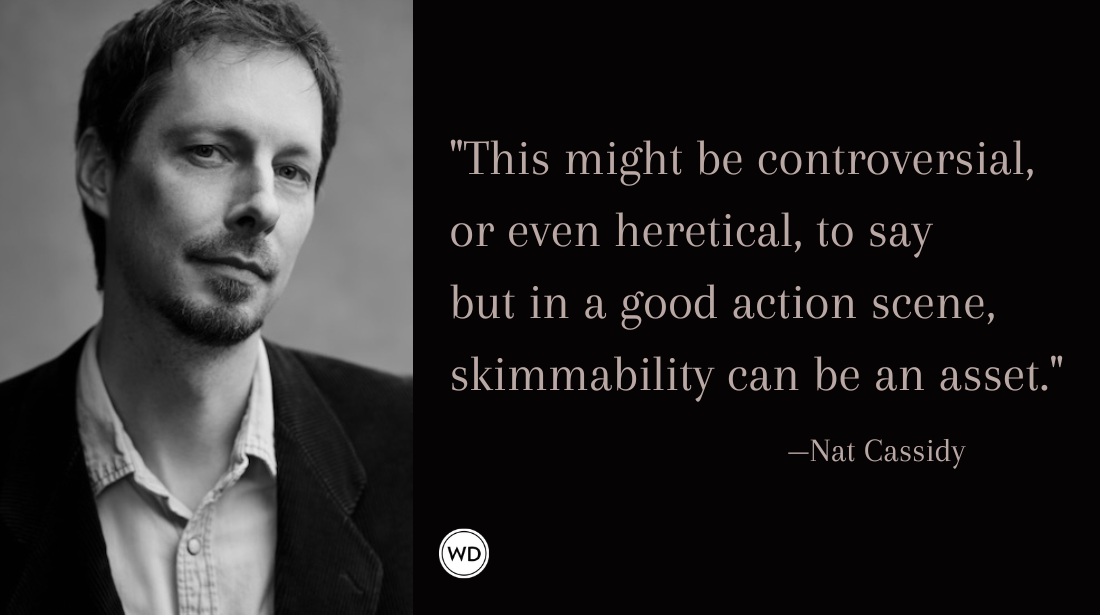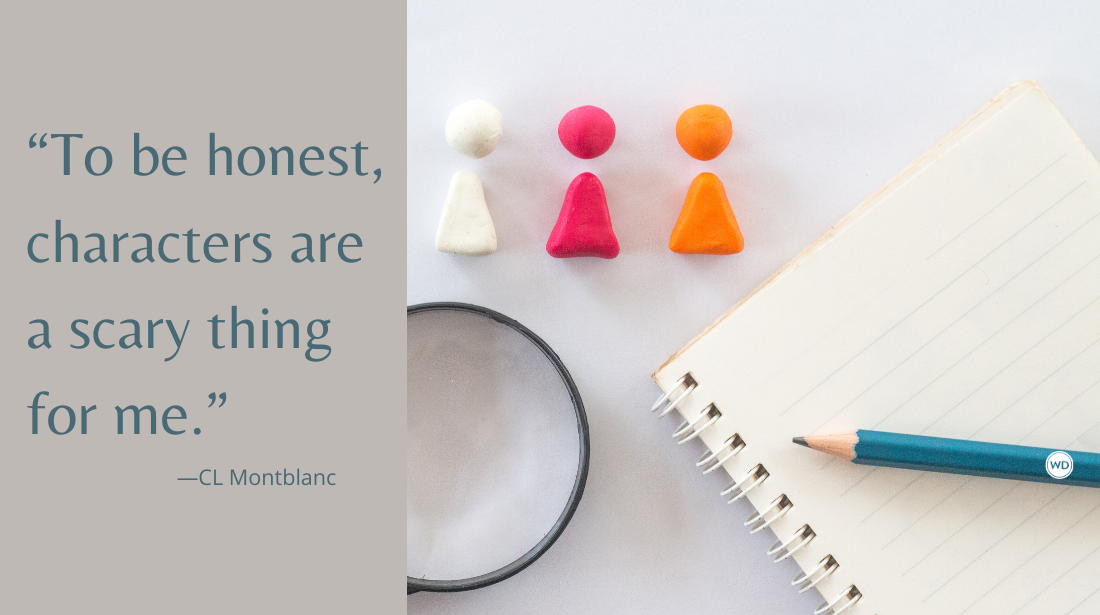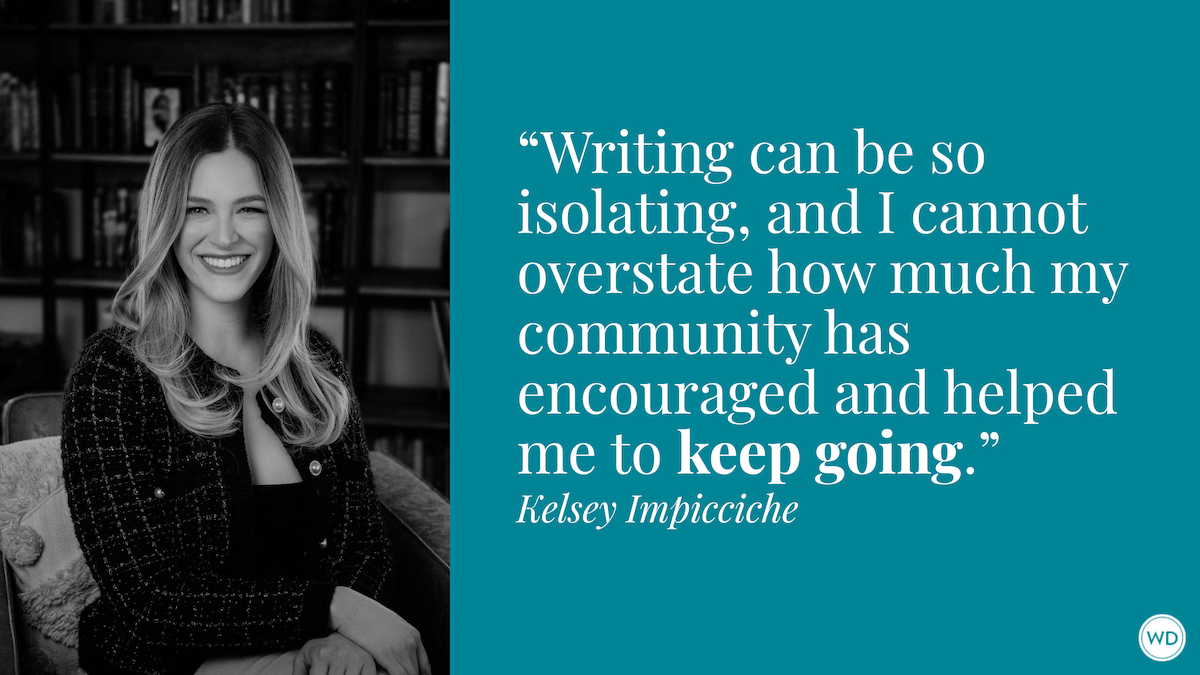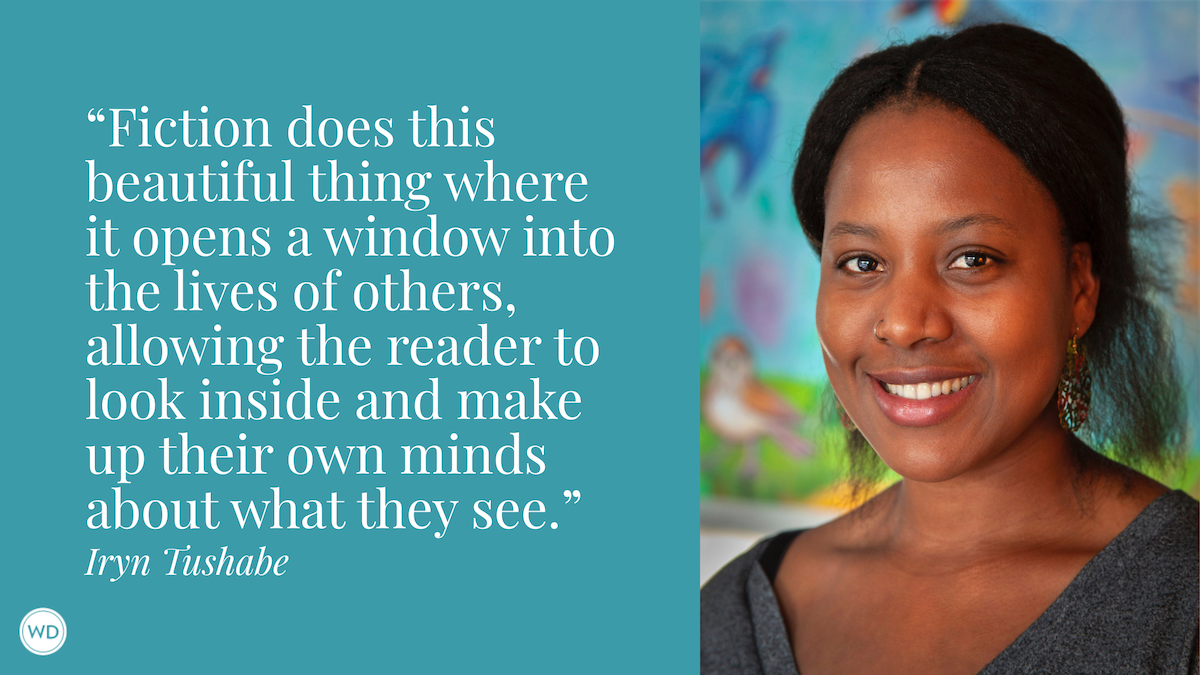5 Tips on Writing a Standout Self-Published Book From Someone Who’s Read Hundreds of Them
WD competition judge AJ Wells breaks down what will make or break your self-published book, from cover design to plot construction.
As a judge for Writer's Digest self-published competitions, it's my mini-Christmas when the books arrive. I can't help but be in awe of the work these authors have done. At the same time, I have to admit that I feel strong disappointment when an incredible book has a critical flaw—as in a mistake that I simply can't look beyond no matter how great everything else is—especially when that critical flaw is a common occurrence amongst self-published books.
The world of writing help often points to writing in general, yet I think that self-publishing is a genre unto itself. Therefore, here are five pieces of advice I'd give to someone planning to self publish.
1. Judge Your Book by Its Cover
It might seem obvious, but the cover is the very first thing a reader sees on a book. The right self-published cover invites precious readers inside, like a gracious host welcoming his guests for dinner. The goal is to get someone excited about holding your book and cracking it open.
Simply put, the adage "Don't judge a book by its cover" is for readers. Not self-published authors. This always pains me to critique, because the cover design often directly corresponds to money spent. As the financier of your book, you cannot cut corners. Imagine having your book published traditionally, and the publisher decides to apply budget cuts to the front cover. The author should be livid! Covers don't have to be the fanciest, shiniest illustrations. Instead, they ought to present the essence of the book with the hope of hooking a reader in your specific audience. The quality is crucial. Unfortunately, just because your graphic artist friend drew something up for you, it doesn't work if it doesn't look professional.
The quality of covers isn't always entirely money-related. Typos in the back cover synopsis absolutely sink a self-published book. Overemphasizing the author's credentials or putting too many blurbs can overshadow the story and often don't help win a reader over.
Some of my favorite examples from judging are The Word Dancer by Maxine Rose Schur and In the Realm of Ash and Sorrow by Kenneth W. Harmon. Both of these covers have an outstanding appeal of professionalism while also offering the idiosyncratic nature of the book.
2. Start on the Right Foot
If you've ever made a decision as to which book to buy from the bookstore based upon the opening lines, then you know exactly what I'm talking about. Sometimes we don't know why opening lines connect with us so effectively, but I've got some ideas as to what contributes to this "love at first sight" feeling.
The most successful books I've judged established tension immediately. They did not use the opening lines to describe the sunset or how the grass blew, but they focused directly on what was at stake. As best explained to me by Maria Kuznetsova, author of Oksana, Behave!, the line of tension must be taut from beginning to end of the novel. The tauter the line, the more conflicts can be hung from it.
Writing quality can be sensed immediately in the opening lines. This is not always foolproof, since self-published books can have inconsistent writing (bonus tip: watch out for disparate tones!), but if the beginning of a book lacks crisp, fresh language, I struggle to get excited about the rest of the book.
Also, I expect the beginning of the book to establish the rules, particularly when it comes to perspective and character intimacy (see tip #3). Ground me in the world of your book, but do so as a good host might. A good host doesn't bore his guest with a detailed tour right off the bat, but rather points out what the visitor needs or wants to know so that the true entertainment may happen.
One of the most affecting opening scenes from this year's competition came from Wilderness Therapy by Paul Cumbo, who directly placed his reader in the trauma of Whitaker (the main character) from losing his father, only to (spoiler alert) hang further tension later by adding the more affective scene: the drowning of Whitaker's brother. Cumbo, most importantly, allowed the gravity of the tension to speak for itself and used crisp, vivid writing that allowed accessibility as opposed to overdramatizing these events.
3. Whose Head Is It Anyway?
The current popular perspective is limited (be it third person or first person, intimacy is the most important factor). This has changed over time and will continue to change based upon readers' tastes. Regardless of what traditional publishing is looking for, I like to think of perspective as somewhat similar to a play. Not everyone can be in the spotlight at once, whether that's on the same page or throughout the book.
I have judged numerous books that switch perspectives between chapters or even bounce between heads on the same page. Unless each perspective actually offers something new to the world, it spoils the intimacy and reader's connection to a character. In perspective, the most successful books allowed their star to filter the world. So many self-published books are risky, off-the-beaten-path subjects (see tip #5)—which can be great!—but also must be sure to allow accessibility through a consistent lens.
In Rina Z. Neiman's novel Born Under Fire, Neiman allows young Shula to offer an intimate perspective on the creation of Israel. We see Shula learn to play the piano and even roast coffee, all while Israel is going through historical developments in the background. At the most critical moment of the novel, Shula allows us to recognize an intersection between her newfound adulthood and Israel's creation when she screams to the adults, "We don't have the British anymore! We have to take care of ourselves!" For this line to have a tremendous impact, Neiman had to create a deep, intimate understanding of Shula's rise to independence alongside Israel's, and not distract the reader by offering other characters who just aren't as important.
4. Plot > Detail
Detail might be the greatest craft trap I see in self-published novels. In almost every book I judge, there's at least a handful of moments where the author clearly poured his or her heart into specific details that don't do anything but clog the plot. I am guilty of this too, but the fact is that as a reader I simply don't care what every single object in a room or facial feature on a character looks like. Tom Drury, author of Pacific, best explained to me that the purpose of detail is to provide enough vividness for the readers to picture the scene in their own minds. Detail should match the importance of the action or accentuate the plot, never get in the way.
Even the most vivid details can be a few descriptive words, like in Page Morgan's The Last Huntsman, Morgan welcomes us into a tavern using brief, poignant detail: "The tavern smelled like smoke and spilled ale." Readers don't need to know what the place looked like, it's a tavern! Trust that they've seen taverns before. What's more important is what's happening in this tavern, not whether it has brick flooring or flowery paintings on the wall. Detail can also be used to evoke feeling within the vivid imagery through particularly chosen words, like in Leo Gray and the Lunar Eclipse by K.J. Kruk, "What was once a completely blacked-out room was now fully illuminated with a warm amber hue…." Morgan and Kruk could not have offered anything more vivid than their descriptions, just enough detail to set the scene and away they went.
Too often, I see self-published authors using melodramatic detail, which can actually distance the reader as opposed to establishing an empathetic connection. Crumpling shoulders, glowering upwards, and cells in the body collapsing don't exactly invite me in. Detail comes down to trusting that readers can imagine for themselves.
5. Believing the Risks
Self-published books are the perfect place for taking risks. You are in charge of everything, why turn out something that people can find in traditional publishing?
This can be a double-edged sword since too great of a risk can simply be a reach and lose the reader's willing suspension of disbelief.
My critique on risk can greatly depend on the genre. On one hand, I'm usually encouraging young adult authors to go for more. On the other, I'm begging science fiction authors to ground their imagination.
The most successful self-published books I've read were relatable and accessible but in no way familiar.
Every winning story I chose felt fresh and unique while allowing me to see myself in the plot.
For example, Susanna's Midnight Ride by Libby Carty McNamee, an honorable mention winner for the young adult category in the 27th Writer's Digest Self-Published Book Awards, builds upon the true story of Susanna Bolling alerting General Lafayette about a surprise attack from the British. The truth is exciting on its own, but McNamee takes risks by offering Susanna's involvement with slavery, her brothers at war, and the recognition of how Susanna truly does save the day with her incredible midnight ride to find Lafayette.
On the flip side, In the Slip by F.D. Lee, is a time-warp novel (not necessarily time-travel!) and embraces sensationalism as well as existentialism. It would have been way too easy for Lee to lose her readers, but she prioritizes structure and guides her audience through a messy timeline by being aware of how difficult her book can be to follow (without being an overbearing host!).
All in all, I'd absolutely prefer to read a risk-taking self-published novel over one that plays it safe.
Find Some Honest Friends and Take Your Time
To me, there is nothing more admirable than a self-published book. It is the result of a writer's determination to no longer write for him or herself and, instead, produce work for an audience.
One thing to recognize in self-publishing is that there might be unfair pressure to release the book too soon. Always read it one more time, and don't let your nice friends read it—well, maybe one or two nice friends for a good confidence boost. Keep in mind that as the sole financier of your publication, you've got to watch out for "yes-men" and the tendency to rush the process.
Don't think that self-publishing means you have to do it all your own. Get a solid team of honest people around you that want your book to succeed as badly as you do, and when the book becomes public, send it our way!
AJ Wells holds a literature and creative writing MA from Auburn University. He was also a visiting graduate student at the Iowa Writers' Workshop. He earned his BA from The College of the Holy Cross where he double majored in English and classics and minored in rhetoric. He currently lives in his hometown Buena Vista, Georgia.








